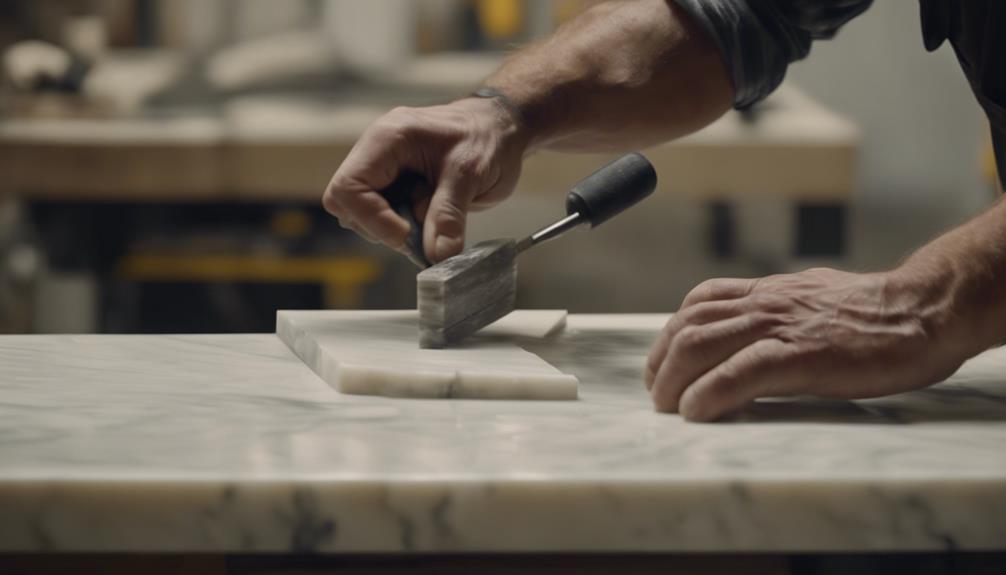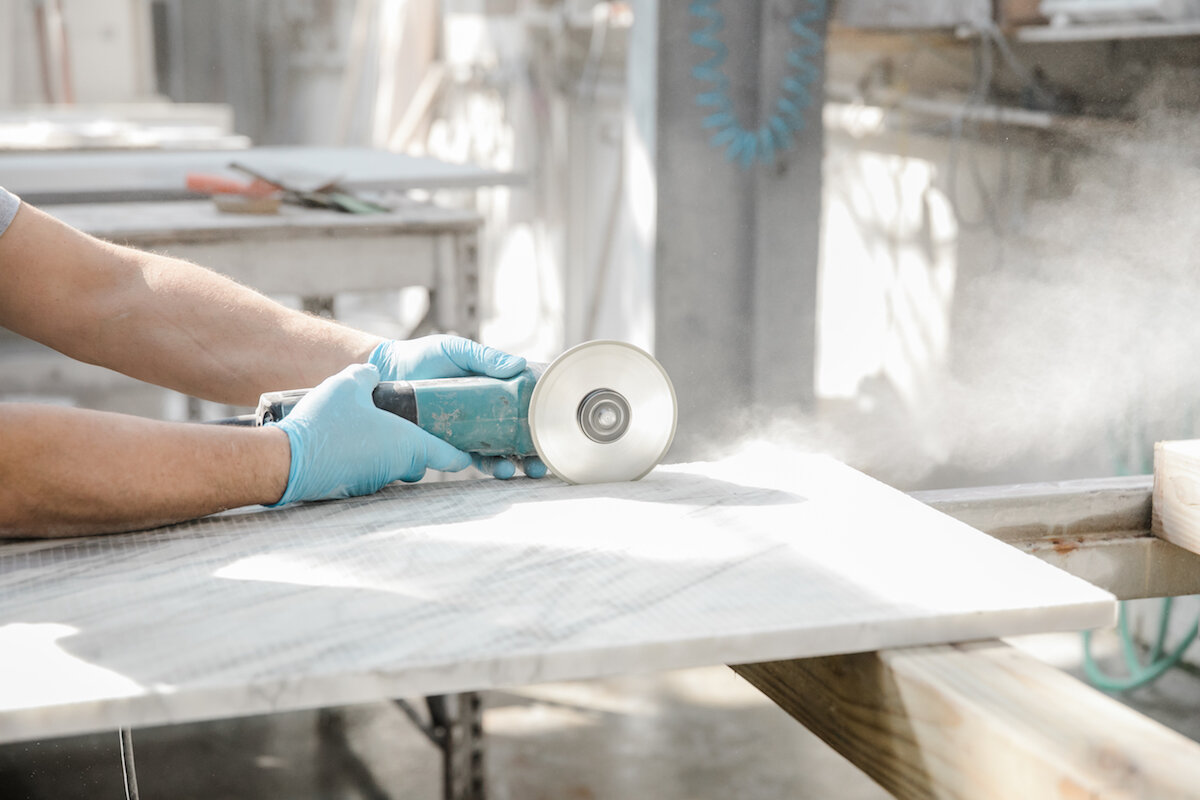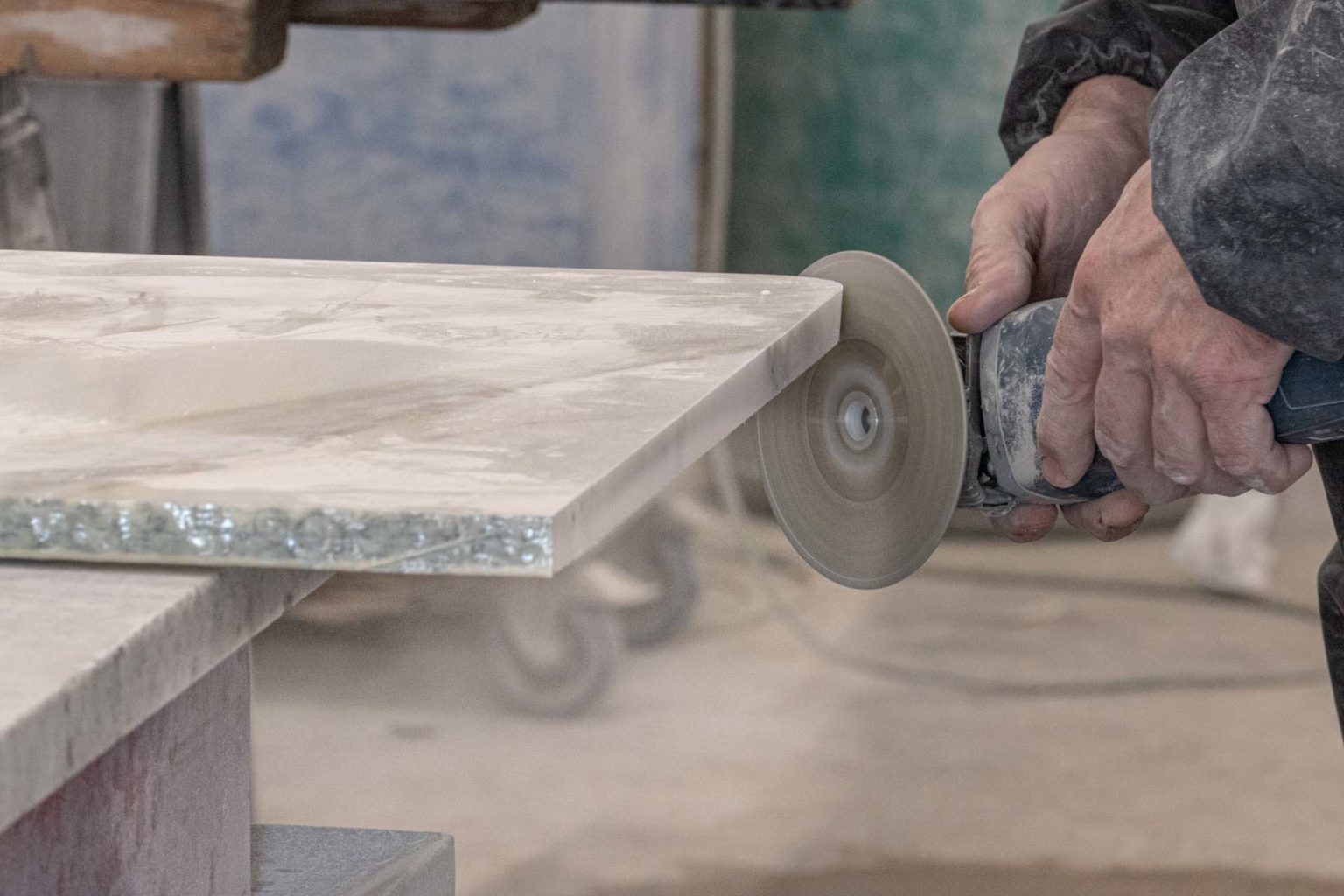Creating High-End Engineered Marble
A detailed look at the latest methods and innovations in high-end engineered marble, blending timeless beauty with modern durability. Packed with practical insights and historical context, it highlights the best in craftsmanship and technology.
Author:George EvansMar 24, 20257.6K Shares170.8K Views

For centuries, marble has been the pinnacle of luxury and durability in architecture and design, its natural beauty shaped by millions of years of geological artistry. Today, advancements in technology and craftsmanship have given rise to high-end engineered marble, blending the elegance of natural stone with modern performance.
Premium Engineered Stone Methods
1. High-Grade Engineered Stone (Quartz Composite)
Base Materials:93-95% crushed natural quartz, 5-7% polymer resins
Process:
- Select highest-purity quartz crystals (ideally >99.9% SiO₂)
- Custom pigmentation using mineral-based colorants
- Vacuum vibro-compression at 100+ bar pressure
- Controlled cure at precise temperatures
Key to Premium Look:Multiple particle sizes (including micro-particles) for depth
Cost:$250-400/m² for materials (excluding fabrication)
Advantages:Far more durable than natural marble, stain-resistant, consistent patterning
2. Ultra-Thin Marble Veneer
Process:
- Cut premium marble at 3-5mm thickness
- Laminate to fiberglass or aluminum honeycomb backing
- Apply nano-coating sealants for durability
Result:Real marble surface with enhanced structural properties
Cost:$300-600/m² (using 80% less premium marble per installation)
Advantage:Authentic marble appearance with improved performance
3. Advanced Sintered Stone
Materials:Clay, feldspar, silica, mineral oxides
Process:
- Ultra-fine particle selection
- Precise mineral composition control
- Sintering at 1200°C+ temperatures
- Digital surface printing using mineral-based inks
Cost:$200-350/m²
Advantages:Exceptional durability, heat resistance, zero porosity
Key Players:Dekton, Neolith, Lapitec
Artisanal Techniques
1. Terrazzo 2.0
Materials:Premium marble chips, white cement, proprietary additives
Process:
- Select specific Calacatta, Statuario, or other premium marble fragments
- Cast with high-performance white cement
- Polish to 3000+ grit for glass-like finish
Cost:$200-400/m² depending on marble fragment quality
Advantage:Creates original designs while showcasing premium marble pieces
2. Scagliola (Elite Traditional Technique)
Materials:Selenite gypsum, natural glues, mineral pigments
Process:
- Ancient technique modernized with contemporary materials
- Hand-mixed, cast, carved, and polished
- Multiple layers to create depth
Cost:$500-1000/m² (labor-intensive artisanal process)
Advantage:Can precisely mimic rare marbles through skilled craftsmanship
Best For:Decorative elements, columns, fireplace surrounds
Cutting-Edge Innovations
1. Marble Waste Composite
Materials:95%+ recycled marble dust and fragments, bio-resins
Process:
- Collect waste from premium quarries
- Bind with plant-based resins
- Compression and controlled curing
Cost:$180-300/m²
Advantage:Sustainability with authentic marble content
Look:Can closely resemble terrazzo or create unique aesthetics
2. 3D Printed Marble Alternatives
Materials:Specialized mineral composites with binders
Process:
- 3D modeling of desired veining patterns
- Layer-by-layer deposition
- Post-processing for polish and durability
Cost:$400-800/m² (still emerging technology)
Advantage:Complete customization of patterns impossible in nature
Status:Emerging commercial viability, limited availability
3. Nano-crystalline Glass Ceramics
Materials:Glass formers, nucleating agents, ceramic stabilizers
Process:
- Controlled crystallization of glass
- Precise thermal processing
- Custom coloration through ion exchange
Cost:$300-500/m²
Advantage:Exceptional translucency similar to rare marbles
Applications:Primarily decorative elements, backlit features
Read Also: The Connoisseur's Guide To Natural Marble
Commercial Brands Creating Premium Alternatives
1. Cosentino (Dekton)
- Technology:Ultra-compaction
- Premium Line:Dekton Natural Collection
- Notable Replica:"Aura" mimics Calacatta
- Cost:$200-350/m²
2. Neolith
- Technology:Sintered stone
- Premium Line:Neolith Calacatta
- Speciality:Bookmatched patterns
- Cost:$180-320/m²
3. Caesarstone
- Technology:Quartz composite
- Premium Line:Supernatural Collection
- Notable Replica:"Calacatta Nuvo"
- Cost:$150-280/m²
4. Antolini (Azerocare)
- Technology:Natural marble with proprietary treatment
- Advantage:Natural marble with stain/acid resistance
- Cost:$600-1200/m² (varies by marble type)
Key Design Factors For Premium Results
1. Veining Authenticity
Problem:Most engineered products have repetitive patterns
Solution:
- Invest in products with larger repeat distances
- Use digital printing with 4-meter+ pattern cycles
- Consider book-matching and continuous veining options
2. Surface Finish
Premium Look:
- Avoid excessive shine in replicas (signals artificial origin)
- Select honed or satin finishes for more authentic appearance
- Consider leathered texture for unique tactile experience
3. Edge Profiles
Authentic Details:
- Mitered edges hide composite construction
- Avoid pencil edges that reveal internal structure
- Waterfall edges create dramatic continuous patterns
4. Installation Technique
Premium Result:
- Minimize visible seams (essential for believability)
- Book-match patterns at corners
- Consider integrated sinks from same material
Creating Custom Premium Veining (Commercial Process)
1. Digital Design Phase
- Create 3D model of desired veining
- Simulate multiple slabs for continuous patterns
- Test pattern authenticity against natural reference
2. Production Techniques
- Method A:Layer-specific pigmentation during casting
- Method B:Deep ink penetration (8-10mm depth)
- Method C:Through-body veining with multiple material injections
3. Surface Treatments
- Apply variable finish across surface
- Create subtle depth variations
- Add controlled translucency in key areas
Conclusion
While nothing perfectly replaces quarried marble from historic sources, modern manufacturing has made remarkable advances in creating alternatives that offer similar aesthetics with improved performance. The most successful high-end engineered stones don't try to be perfect replicas but rather draw inspiration from marble's inherent beauty while offering enhanced practical benefits.
For truly indistinguishable results, the combination of ultra-thin marble veneers with engineered substrates currently provides the best balance of authentic appearance and improved durability. However, for practical applications, premium sintered stone and top-tier quartz composites offer the most reliable performance while still providing convincing aesthetics.
You Might Also Like: The Evolution Of Luxury Architecture

George Evans
Author
George Anderson, an exceptional architectural designer, envisions and brings to life structures that transcend the realm of imagination. With an unwavering passion for design and an innate eye for detail, George seamlessly blends form and function, creating immersive spaces that inspire awe.
Driven by a deep appreciation for the interplay of space, light, and materials, George's innovative approach redefines the possibilities of architectural design. His visionary compositions leave an indelible mark, evoking a sense of wonder and transforming the built environment.
George Anderson's transformative designs and unwavering dedication continue to shape the architectural landscape, pushing the boundaries of what is possible and inspiring generations to come.
Latest Articles
Popular Articles

